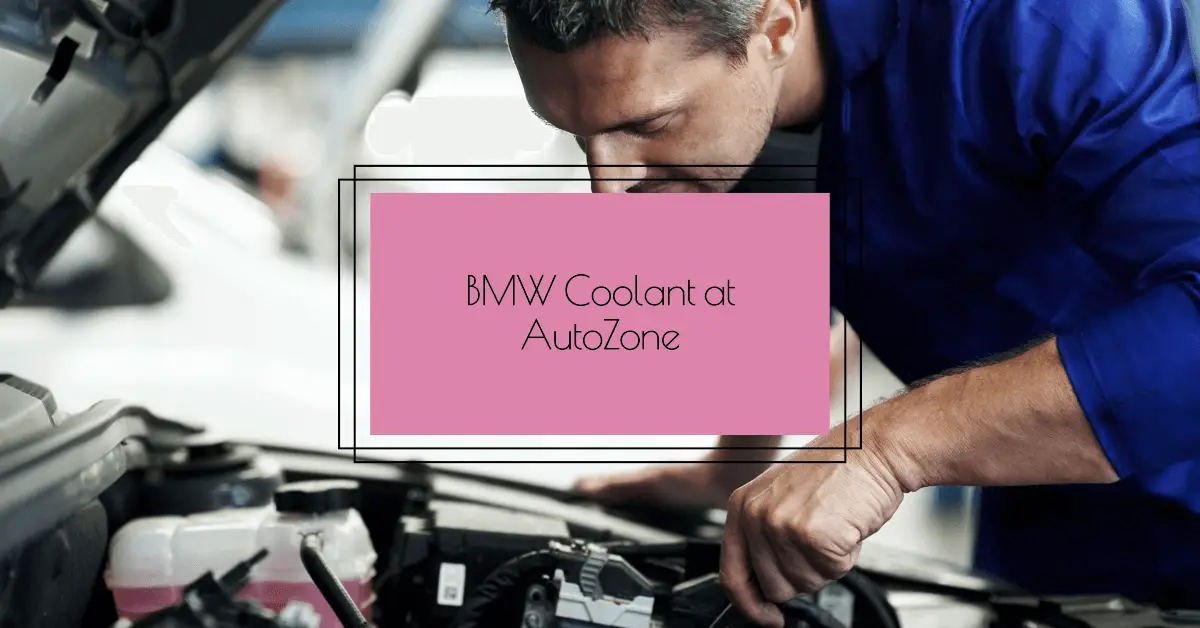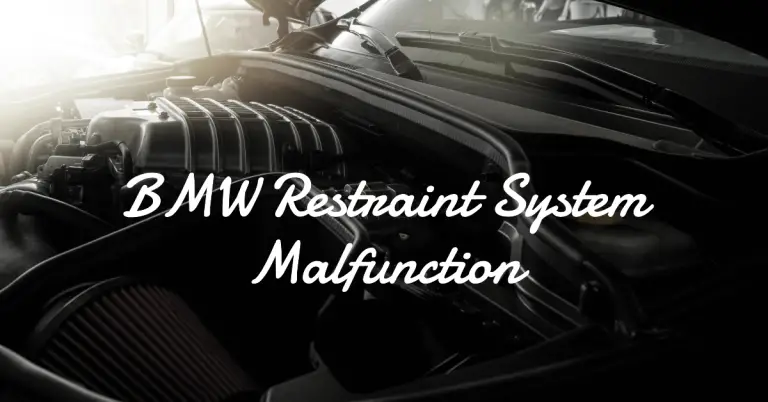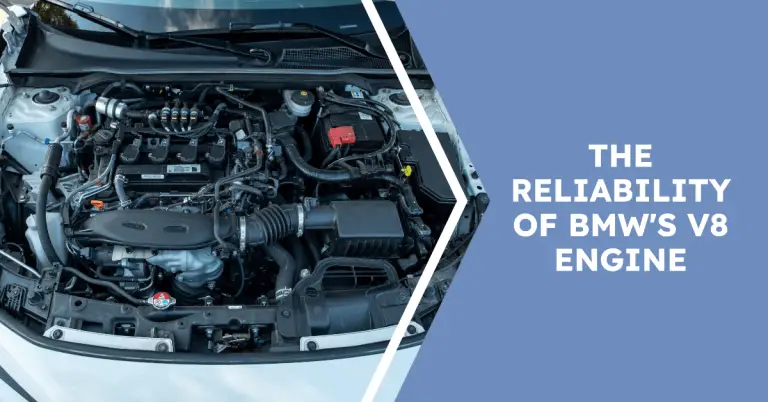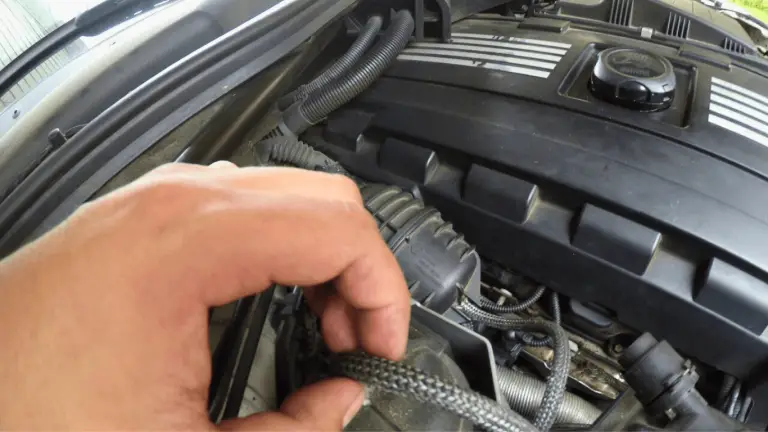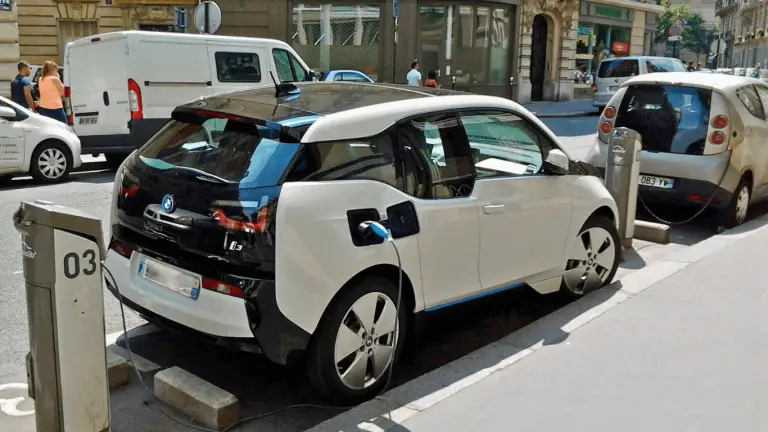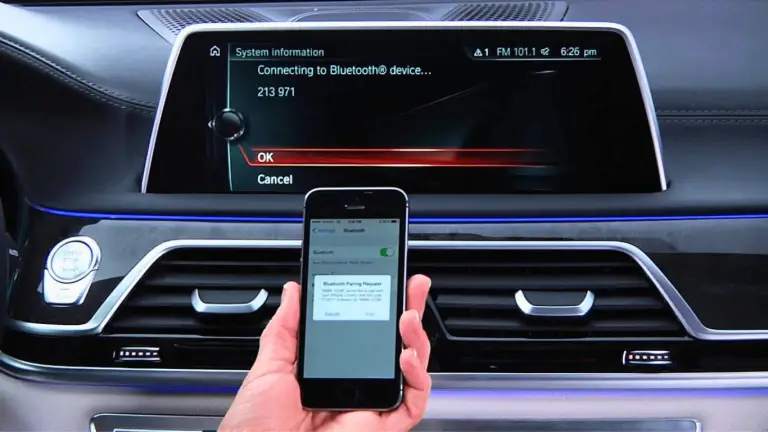BMW Coolant AutoZone: Where to Find and How to Use
Are you a BMW owner looking to top up or change the coolant in your vehicle? Finding the right coolant specifically approved for your BMW model is crucial to ensure optimal performance and prevent engine damage. Many BMW owners turn to auto parts stores like AutoZone when they need BMW coolant. But with so many options on the shelves, how do you know which one is right for your car?
In this detailed guide, you’ll learn exactly where to find the right BMW coolant at AutoZone and how to properly use it for your specific BMW model.
We’ll cover crucial topics like:
- Identifying when you need to add more BMW coolant
- Understanding the different types of coolant sold at AutoZone
- Steps for safely adding BMW coolant to your expansion tank
- Bleeding air from the cooling system
- Tips for maintaining proper coolant levels
- And more…
Whether you’re in a pinch and need to quickly top up your coolant, or due for a full cooling system flush, this guide will equip you with the key information to get the right BMW coolant product from AutoZone and use it like a pro. So let’s get started!
Recognizing When Your BMW Needs More Coolant
Before heading out to buy coolant, it’s important to check your BMW’s current coolant level and determine if it does indeed need more fluid. Here are some signs your car may be running low on coolant:
- Checking the expansion tank. The easiest way to identify low coolant is to check the see-through plastic expansion tank located in the engine bay. When the engine is cold, the coolant level should be between the “Min” and “Max” lines marked on the tank. If it’s below the Min line, you need to add more coolant.
- Engine overheating. If your BMW’s temperature gauge is rising higher than normal or the warning light comes on, the cooling system may not have enough fluid to properly regulate engine temperature. Topping up the coolant can help bring temperatures back down.
- Leaking or smell. Visible leaks under your BMW along with the smell of coolant from the engine bay or vents indicate you’re losing fluid somewhere. Identify any leak sources and top up the cooling system after repairs.
- Wrong color. BMW coolant comes in blue, pink, or yellow depending on the model. If it’s green or orange, that likely indicates someone added universal coolant instead of the specific type required by BMW. Flush the system and replace with proper BMW coolant.
Once you’ve determined your BMW does in fact need more coolant, it’s time to find the right product at your local AutoZone.
Finding the Correct BMW Coolant at AutoZone
Not all coolants are created equal when it comes to BMWs. Using the wrong type of fluid could lead to cooling system damage over time. Here are some tips for finding the right BMW coolant at AutoZone:
- Refer to your owner’s manual. The manual will indicate the exact coolant type required for your BMW model, usually based on the model year. This should be your first point of reference before buying coolant. Write down what it specifies.
- Use AutoZone’s online lookup. On AutoZone’s website, you can enter your BMW’s year, make and model and it will show you exactly which coolant products they carry that are approved for your car. Much easier than guessing in the store!
- Choose BMW-branded fluid. You’ll find blue BMW coolant alongside various generic brands on the shelf. For the most peace of mind, opt for a fluid that says “BMW” on the container from reputable brands like Pentosin.
- Avoid universal coolants. While they may be cheaper, universal coolants not formulated specifically for BMW can potentially clog passages in the cooling system over time. Stick with BMW-approved options.
Getting the proper fluid specially designed for your BMW’s cooling system is crucial. Once you’ve located the correct coolant at AutoZone, next comes the choice between pre-mixed and concentrate…
Pre-Mixed vs Concentrate BMW Coolant
When buying BMW coolant at AutoZone you’ll see two main options:
1. Pre-mixed ready to pour coolant – comes pre-diluted 50/50 with distilled water and ready to pour directly into your expansion tank.
2. Coolant concentrate – this is a concentrated formula that must be mixed 50/50 with distilled water before adding to your car.
Here are some things to consider when deciding:
- Convenience. Pre-mixed fluid is the easier option as you can pour it straight in without mixing. Concentrate requires an extra dilution step.
- Cost. Concentrates are typically cheaper per volume compared to pre-mixed. However, you need to buy distilled water too.
- Mixing. Only use distilled water, not tap water, when diluting concentrate. Tap water has minerals that can leave deposits.
- Shelf life. Once opened, pre-mixed coolant has a shorter shelf life of around 6 months. Concentrates can last over 2 years before mixing.
Either option can work fine as long as you get the correct BMW fluid. Just decide if the extra convenience of pre-mixed is worth a slightly higher price for you.
Now that you’ve got the right BMW coolant product from AutoZone, let’s go over the crucial steps for safely adding it to your car…
Adding BMW Coolant – Step-by-Step
Adding coolant is straightforward, but there are some important steps to follow:
Safety Tips
- Let engine cool completely – Only remove the cap and add fluid when the engine is cold to avoid burns.
- Use eye protection – Coolant can splash and irritate eyes. Wear safety glasses when working in the engine bay.
- Wear gloves – Spilled coolant is slippery and toxic, so always protect your hands with gloves.
- Release pressure – Slowly turn the expansion tank cap to the first stop and let any internal pressure release before fully removing the cap.
Filling the Expansion Tank
- Locate the tank – Find the plastic coolant expansion tank in your BMW’s engine bay. It will have a cap labeled “Coolant” on top.
- Slowly unscrew the cap – Carefully turn the cap counterclockwise to the first stop and wait a few seconds for any pressure to release. Then remove the cap fully.
- Add BMW coolant – Pour your new BMW coolant directly into the expansion tank slowly until the fluid level reaches the MAX line. Don’t overfill past the Max mark.
- Replace the cap – Once full, tighten the cap back clockwise until it clicks. Never leave the tank cap off after adding fluid.
And that’s the basic process for topping up your BMW with fresh coolant easily and safely. But there’s an extra step required if your BMW was very low on coolant or completely empty…
Bleeding the Cooling System of Air
Anytime your BMW’s cooling system is drained fully of old coolant, air pockets get trapped inside the system. These air bubbles will interfere with proper coolant circulation and must be bled out. Here’s how:
- Once you’ve topped up the expansion tank, start the BMW’s engine and let it reach operating temperature.
- Keep the expansion tank cap off with a rag handy. The coolant level will rise as bubbles purge from the system. Overflowing hot coolant can then be soaked up with the rag.
- When the coolant level rises and stabilizes, top up to the Max line again. Install the cap and press it down firmly.
- Drive the car for 10 minutes to force out any remaining air pockets, then recheck the coolant level. Top up again if needed.
Bleeding the system thoroughly will ensure no air pockets block coolant flow or cause hot spots in your BMW’s engine. Now that you’ve added the new coolant, let’s look at some tips for maintaining proper levels…
Maintaining Proper Coolant Levels in Your BMW
While occasional top-ups may be needed based on leaks or age of the coolant, you also need to monitor and maintain the right amount in your BMW’s cooling system on a regular basis:
- Check fluid weekly – Make it a habit to visually inspect the coolant level in the expansion tank every week when the engine is fully cooled. Look for it to be between Min and Max lines.
- Top up when low – If the coolant level has dropped slightly over time, replenish it back to the Max mark with the proper BMW fluid to maintain sufficient coolant.
- Schedule annual flushes – For optimal performance and corrosion protection, a complete coolant drain and refill should be done once a year. Use a BMW-approved cooling system flush kit.
- Fix any leaks – If you notice your BMW coolant is low despite regular top-ups, have the system inspected for leaks. Repair any faulty hoses, gaskets or components to prevent ongoing loss of fluid.
By staying vigilant and proactive with your BMW’s coolant system, you can identify potential issues before they become serious problems. But what if you notice leaks or other warning signs between service intervals?
Signs of a Coolant Leak in Your BMW
Coolant leaks are fairly common on aging BMWs as seals and hoses begin to fail. Here are some telltale signs to watch out for:
- Wet spots under the car – White or colored dripping underneath your parked BMW typically indicates a coolant leak. Check under the engine bay and radiator area for its source.
- White steam from engine – If you see steam emitting from the hood when idling, coolant is escaping from somewhere in the hot engine and boiling off. Have this checked immediately.
- Sweet coolant smell – Catching the scent of coolant from the car’s vents is a sign of leakage into the HVAC system. Don’t ignore it or coolant could enter the cabin.
- Low coolant level – Your expansion tank requires frequent top-offs despite no visible leaks. Have your BMW’s cooling system pressure tested to identify any internal seepage issues.
Never ignore potential coolant leaks or drips. Left unchecked, engine overheating and catastrophic failure could eventually occur. By using the tips in this guide to select the proper BMW coolant and maintain adequate fluid levels, you can avoid costly overheating repairs down the road.
Conclusion
Whether you have an older BMW with failing coolant components or a newer model just due for routine maintenance, understanding where to source the right fluids and how to add them properly will ensure your car stays cool and protected from corrosion. AutoZone offers a variety of BMW-approved coolants to safely and conveniently keep your cooling system topped up.
With some basic precautions, checking expansion tank levels routinely, and flushing the system annually, your BMW’s engine can hum along for years before major cooling services are required. So stay proactive and use this guide to make your next BMW coolant purchase and refill hassle-free!

